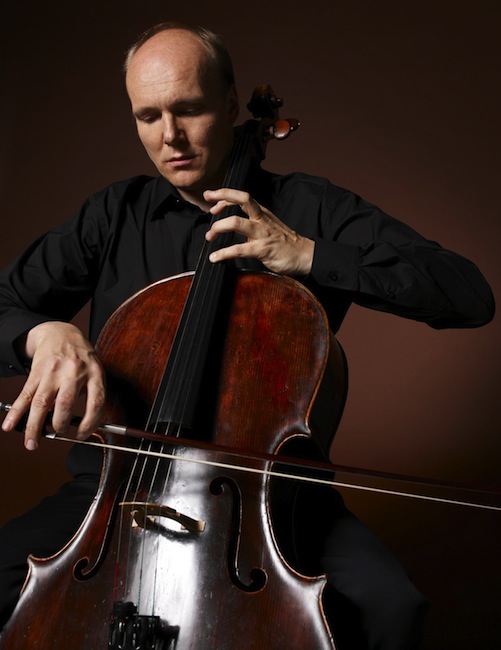Orpheus Chamber Orchestra brings its polished richness to the Kravis Center

Truls Mørk performed Shostakovich’s Cello Concerto No. 1 with the Orpheus Chamber Orchestra Tuesday night at the Kravis Center in West Palm Beach. Photo: Stephane de Bourgies
The Orpheus Chamber Orchestra came to the Kravis Center in West Palm Beach Tuesday for a concert in which the absence of a conductor usually didn’t appear to make a difference.
Founded in 1972 in the anti-establishment spirit of the time, this musical equivalent of a commune quickly attracted top-flight musicians, winning recording contracts and the opportunity to work with leading soloists. Today the ensemble maintains its high standards, with whipcrack precision and a surprisingly rich tone for such modest orchestral forces.
They opened with the Suite No. 2 from Handel’s Water Music. Orchestrated to be heard outdoors on the Thames River, it makes extensive use of trumpets, horns and timpani. This deployment of orchestral artillery can lead to performances that are just loud and blunt in their impact. But the light, agile and assured brass playing of the Orpheus musicians achieved energy and brilliance without bombast.
A new work on the program was Out Came the Sun, commissioned by Orpheus from Shuying Li, a Chinese-born composer who came to the United States to complete her musical education. Currently a doctoral student at the University of Michigan, she composed this work to portray her experience of both the joy of having a baby and the surprise of her postpartum depression that followed.
Like many works of program music, this one provided some pretty literal clues as to what was going on. Momentous chords in the opening appear to announce the baby’s birth. A celesta plays lullabies. Pensive melodies in flute and clarinet, over a restless accompaniment in strings, suggest the mother’s darkening mood. Things appeared to work out, as the orchestral tension lessened and the work ended with simple tones on the celesta. Most effective was the music expressing the mother’s depression, with melodies of wry melancholy that seemed to capture the puzzlement of such a mood after the celebratory days after the birth of a child.
The clear highlight of the concert was a performance of Shostakovich’s Cello Concerto No. 1, with soloist Truls Mørk, who has recorded both the composer’s concertos for Virgin Classics.
The Norwegian cellist’s mastery of the instrument was apparent throughout, as he deployed a rich palette of tone colors in this formidable work. He brought a mordant bite to the pointed four-note motif that dominates the first movement, with passages of piercing intensity toward the end. He unveiled a luscious tone in the second and played with a big sound that carried over the orchestra in the grimly driving last movement. Throughout, his technique was not just polished but flawless, with perfect intonation and no loss of tone as he zipped high up to the instrument’s top register.
The cadenza is of such significance that Shostakovich assigned it its own movement. From the low tones of the cadenza’s opening, Mørk brought slow-building power to the movement, easily handling its virtuoso demands as he played rapid simultaneous notes and made his bow leap across the strings, his technical assurance allowing him to focus firmly on building the movement’s intensity toward the sudden reappearance of the orchestra.
The orchestra, despite the absence of a conductor, provided a strong rhythmic grid for the soloist. The chilling chords that open the second movement came off with plush brilliance, with the movement leading to a searing climax, with the cello sawing away over a surging orchestra.
The concert closed with Stravinsky’s Pulcinella Suite, the only work in which the lack of a conductor appeared to make a difference. Strings played with vigor and interpretive precision in the opening Sinfonia. There was polished, lustrous wind playing in the Gavotta.
Yet there was a certain blandness to the performance, with Stravinsky’s tangy harmonies and rhythms feeling under-inflected and under-characterized in movements such as the Scherzino and the Tarantella. And despite the polished tones of the Gavotta, there was a lack of precision at moments in the variations.
Posted in Performances
Leave a Comment
Wed Dec 6, 2017
at 10:28 am
No Comments






